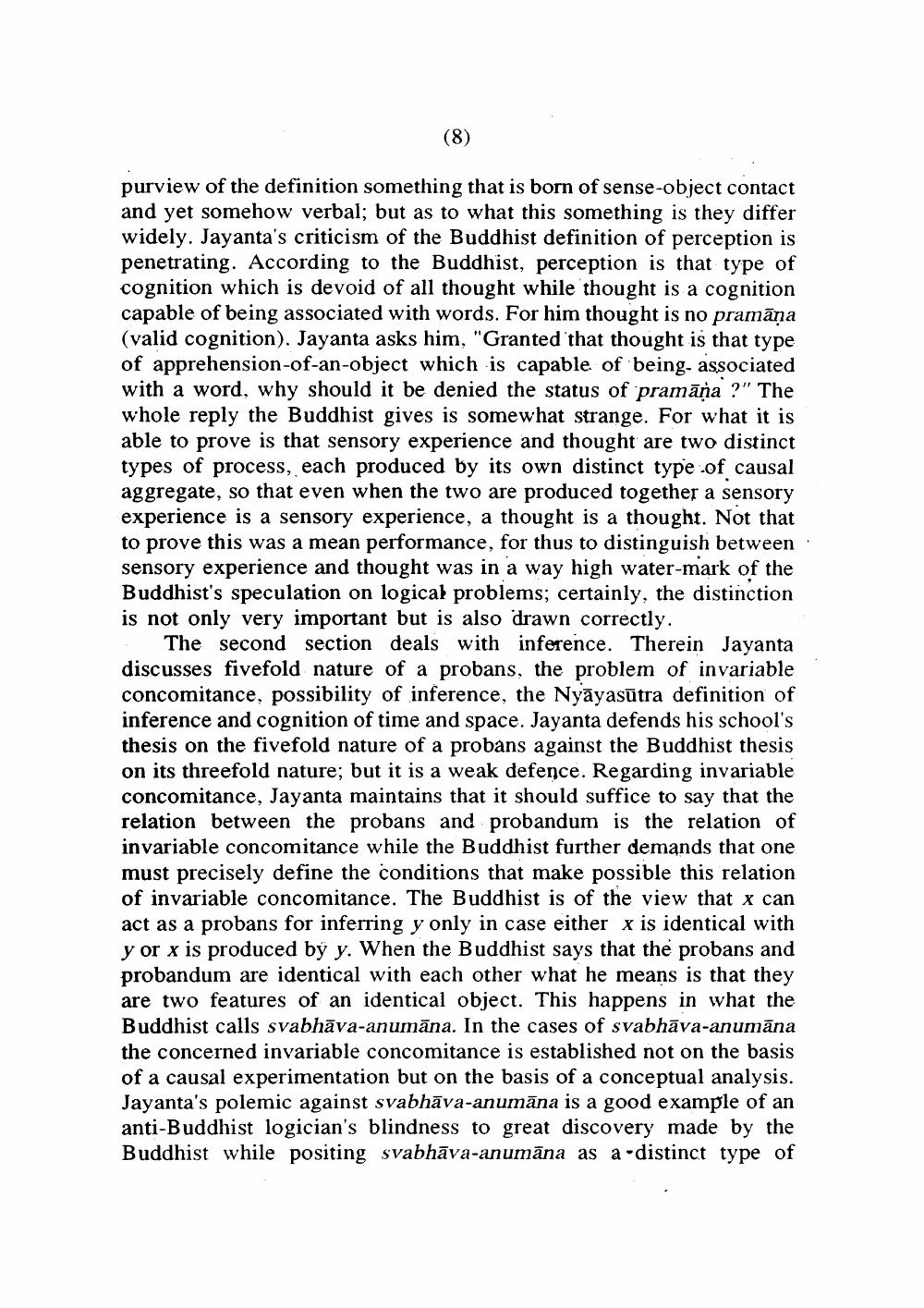Book Title: Indian Logic Part 02 Author(s): Nagin J Shah Publisher: Sanskrit Sanskriti Granthmala View full book textPage 9
________________ (8) purview of the definition something that is born of sense-object contact and yet somehow verbal; but as to what this something is they differ widely. Jayanta's criticism of the Buddhist definition of perception is penetrating. According to the Buddhist, perception is that type of cognition which is devoid of all thought while thought is a cognition capable of being associated with words. For him thought is no pramāna (valid cognition). Jayanta asks him, "Granted that thought is that type of apprehension-of-an-object which is capable of being- associated with a word, why should it be denied the status of pramāņa ?" The whole reply the Buddhist gives is somewhat strange. For what it is able to prove is that sensory experience and thought are two distinct types of process, each produced by its own distinct type of causal aggregate, so that even when the two are produced together a sensory experience is a sensory experience, a thought is a thought. Not that to prove this was a mean performance, for thus to distinguish between sensory experience and thought was in a way high water-mark of the Buddhist's speculation on logical problems; certainly, the distinction is not only very important but is also drawn correctly. The second section deals with inference. Therein Jayanta discusses fivefold nature of a probans, the problem of invariable concomitance, possibility of inference, the Nyāyasūtra definition of inference and cognition of time and space. Jayanta defends his school's thesis on the fivefold nature of a probans against the Buddhist thesis on its threefold nature; but it is a weak defence. Regarding invariable concomitance, Jayanta maintains that it should suffice to say that the relation between the probans and probandum is the relation of invariable concomitance while the Buddhist further demands that one must precisely define the conditions that make possible this relation of invariable concomitance. The Buddhist is of the view that x can act as a probans for inferring y only in case either x is identical with y or x is produced by y. When the Buddhist says that the probans and probandum are identical with each other what he means is that they are two features of an identical object. This happens in what the Buddhist calls svabhāva-anumāna. In the cases of svabhāva-anumāna the concerned invariable concomitance is established not on the basis of a causal experimentation but on the basis of a conceptual analysis. Jayanta's polemic against svabhāva-anumāna is a good example of an anti-Buddhist logician's blindness to great discovery made by the Buddhist while positing svabhāva-anumāna as a distinct type ofPage Navigation
1 ... 7 8 9 10 11 12 13 14 15 16 17 18 19 20 21 22 23 24 25 26 27 28 29 30 31 32 33 34 35 36 37 38 39 40 41 42 43 44 45 46 47 48 49 50 51 52 53 54 55 56 57 58 59 60 61 62 63 64 65 66 67 68 69 70 71 72 73 74 75 76 77 78 79 80 81 82 83 84 85 86 87 88 89 90 91 92 ... 236
